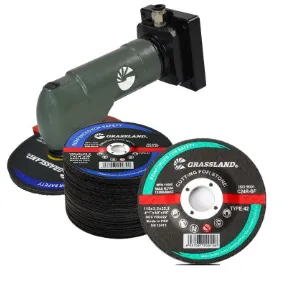

The performance of cutting and grinding discs also hinges on the speed and power of the tool in use. Higher RPM tools require discs rated for similar speed capabilities to prevent disc disintegration, which can lead to severe accidents. Understanding the compatibility of the tool and disc isn’t merely a matter of performance efficiency but also a critical safety consideration, underscoring the user's expertise. Maintenance extends the life of the discs and the tools, ensuring consistent performance. Regular inspection for signs of wear or damage can prevent accidents and maintain effective functionality. Proper storage is also important - discs should be kept in a dry environment to avoid material degradation, particularly for those made with organic bonding materials. Innovation in disc technology continues to evolve, with manufacturers investing in R&D to produce discs that offer superior performance, enhanced safety features, and improved wear resistance. Staying informed about these advancements allows professionals to leverage the best tools on the market, leading to improved job outcomes and operational efficiency. In conclusion, selecting cutting and grinding discs requires a balance of knowledge, expertise, and trust in product quality. By considering the material, size, safety standards, and maintenance requirements, users can ensure they choose the most effective products for their specific needs. As technology progresses, embracing new products with proven performance backing will enhance productivity, forming a cornerstone of expert-level tool management.
Post time:Jan - 16 - 2025

















